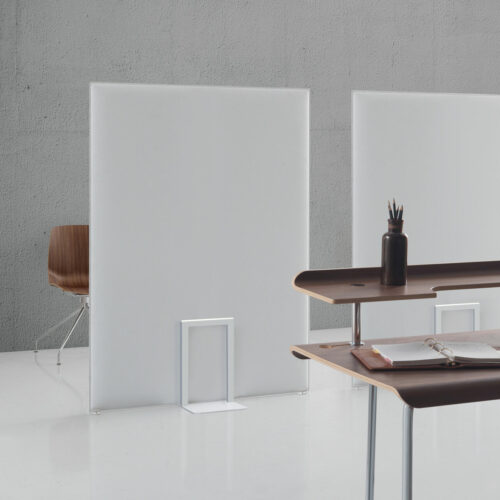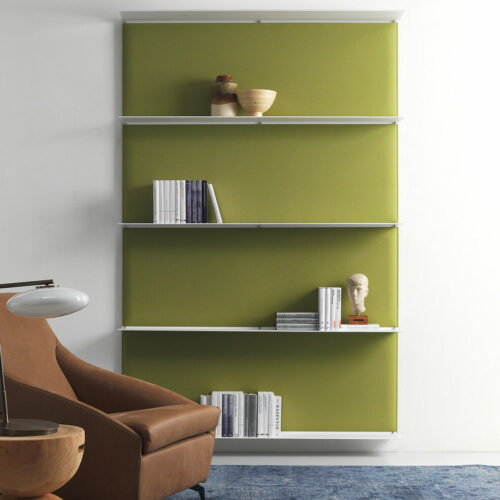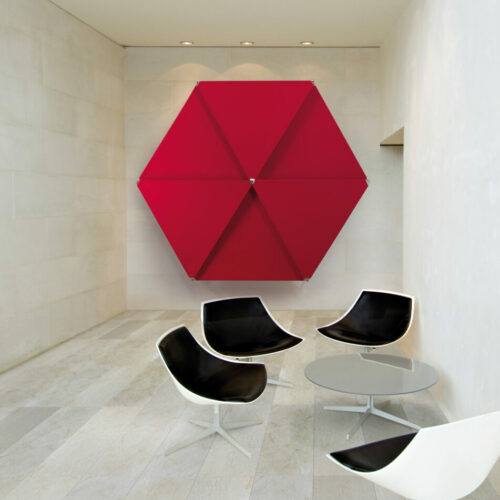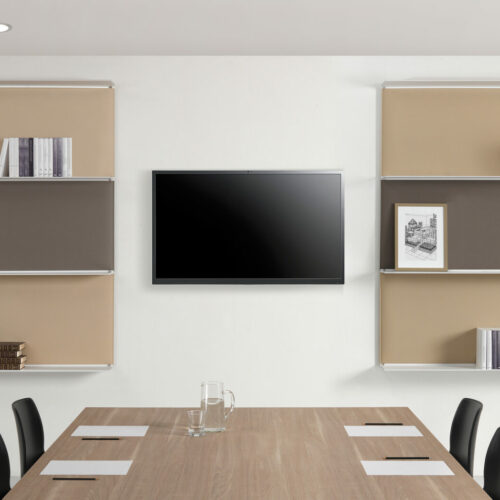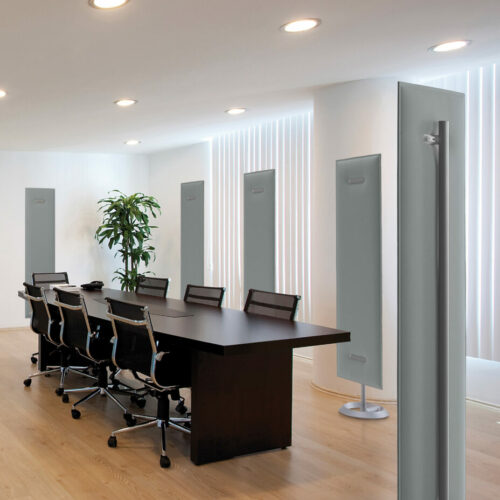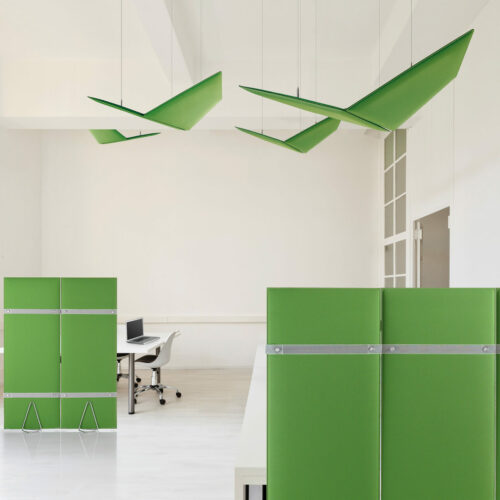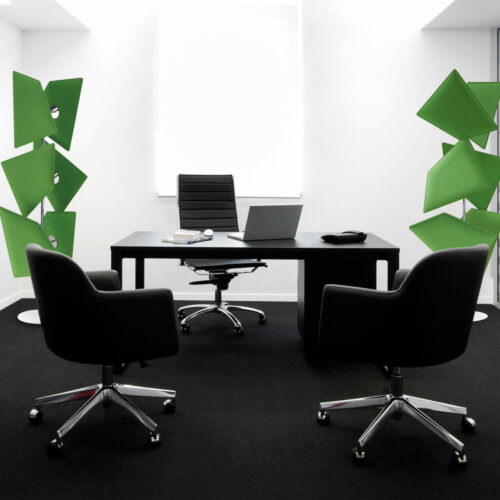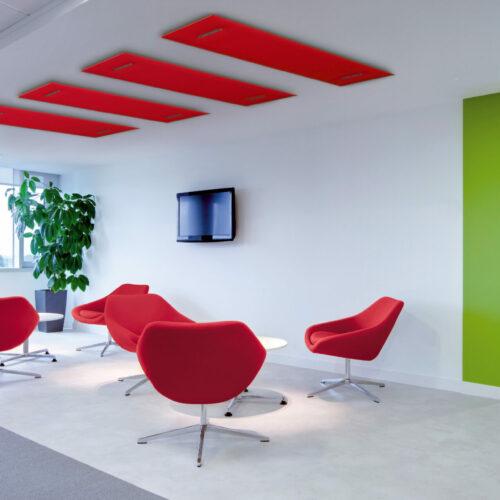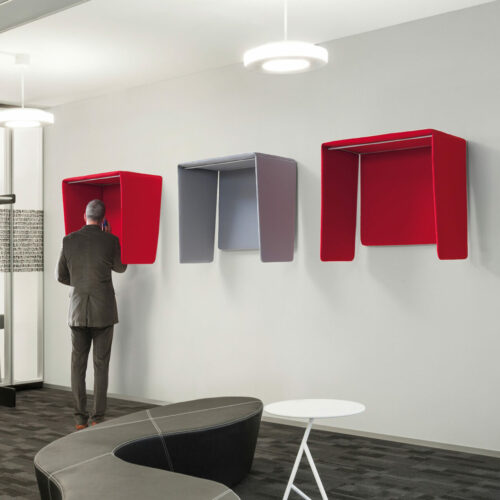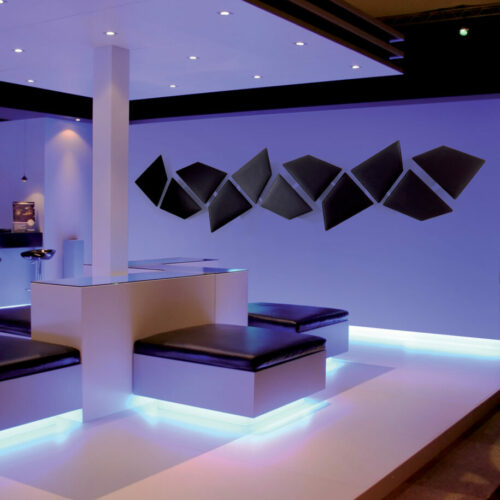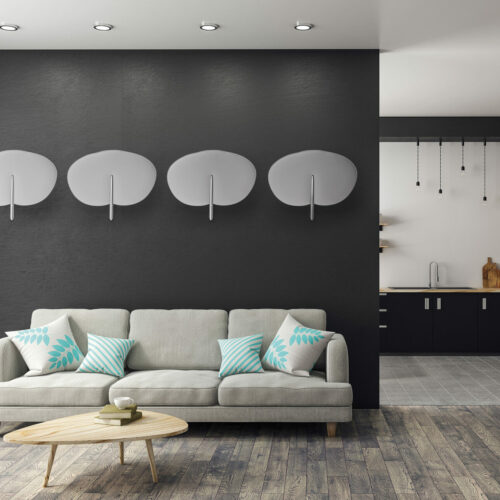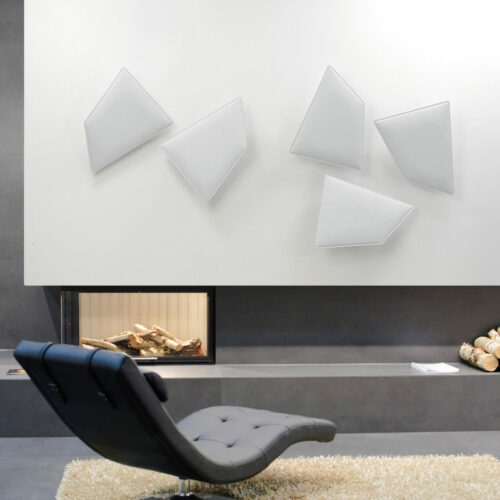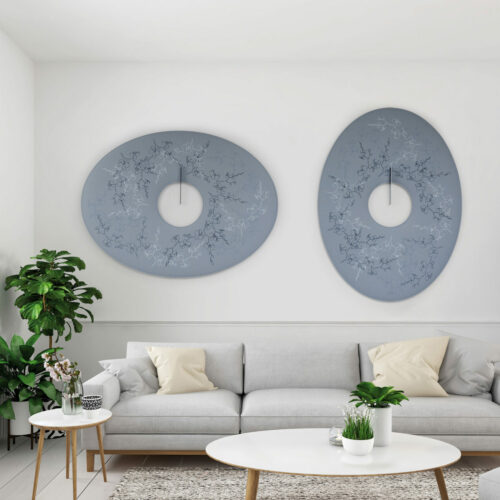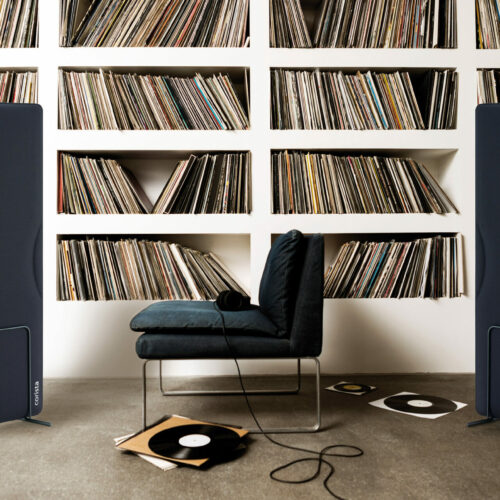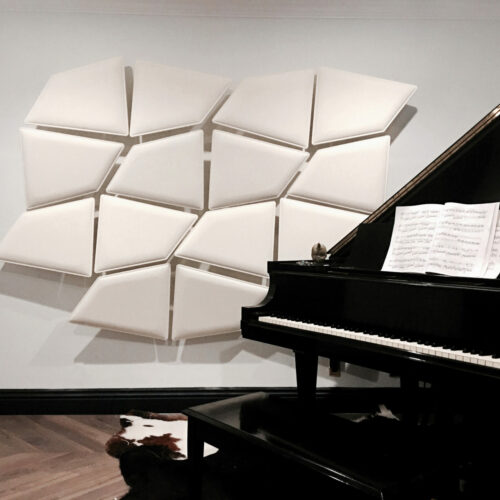Acoustic solutions
for office
and design
Transforming sound
into calm
“It’s just too noisy”, is one of the most common complaints about the workspace. Our smart screens solve this problem, while also creating space within spaces, adding privacy and allowing for better focus. Our range of screens includes everything from smaller screens that can be placed on desks to larger screens that are placed on the floor and function as movable walls. All screens can be colour co-ordinated to suit your particular workspace, offering silence and style in a simple package.

How are we affected by noise at work?
Research shows that the acoustic environment around us influences both the way we feel and our productivity. So it is important to see noise as an important part of the whole picture when furnishing a workplace, whatever the type of solution or type of office. Workplaces with a balanced noise level promote both well-being and success. It is a question of knowing how noise works and how it affects us.
What is the sound?
Sound is made up of vibrations in the air, usually illustrated in the form of waves. Hard surfaces such as smooth walls, floors, ceilings and glazed components bounce sound waves and cause an unpleasant echo in the room. So when you talk about acoustic solutions in rooms, you often measure the reverberation time. This is the time it takes for the sound to decrease by 60 dB from its original level. So, if you want to create a pleasant acoustic environment in a room, you sometimes need to help hard surfaces absorb sound waves in order to reduce the reverberation time.
How do you know if the noise level is too high?
Most people have probably heard that sound intensity is measured in decibels. But when is the noise level in the office too high? Obviously this is subjective to a certain extent; some people are more sensitive to noise than others. But there is a lot of research and guidelines that are worth knowing. For example, there is an increased risk of heart attack at 65 dB; which is a common noise level in our offices. Even at 55 dB, 40% of office workers experience reduced concentration.
15 DB
Rustling leaves
Quiet environment
30-35 DB
Library
WHAT’S HAPPENING?
WHO recommended noise levels for hospital wards and classrooms
50-55 DB
Silent offices
WHAT’S GOING ON?
40% of employees have problems concentrating
EFFECT ON HEALTH
Increased blood pressure, sleep disturbances and increased risk of cardiovascular diseases
65 DB
Noisy offices
WHAT’S GOING ON?
Average noise level in classrooms and offices
HEALTH EFFECT
Increased risk of heart attack
70-85 DB
Road traffic
WHAT’S HAPPENING?
Many countries have legal requirements for the use of hearing protectors in case of prolonged exposure to noise
HEALTH EFFECT
Permanent hearing loss and increased cholesterol levels
Acoustic environment and productivity
Noisy workplaces can easily cause irritation and difficulty in concentrating. For example, a research study has shown that our ability to perform deteriorates when we are surrounded by clearly audible and understandable conversations unrelated to the work we are doing. Three different environments were tested and compared:
an individual office with a closed door
an open office landscape with appropriate acoustic solutions
an open office landscape without acoustic solutions
The study showed that the ability to perform was equally good in the open office landscape with appropriate acoustic solutions and the office with a closed door. In contrast, performance deteriorated in the open office landscape without planned acoustic solutions. Therefore, it is possible to create better conditions for individual work by reducing the intelligibility of other conversations taking place around the individual. With sound absorbers and screens, you can create zones for more concentrated work, where conversations and other noise around us do not disturb us, even if we are sitting in a more open environment.
How does noise affect our health?
It is not only the ability to concentrate and perform that is affected by high noise levels in the office. Research also shows that the stress that some people experience in a noisy working environment can lead to cardiovascular disease and hypertension. A connection has also been found between noise levels and ergonomics. A study published in the Journal of Applied Psychology examined how low-intensity noise in an office environment affects employees, compared to sitting in a quiet environment. Although no difference in productivity was found, it was observed that the test group in the noisy environment was less likely to vary their working position. Employees in the quieter environment adjusted their chairs and footrests much more often. Thus the ergonomics were significantly worse in the test group sitting in the noisy environment. An increase in stress levels due to prolonged low-intensity noise was also found.
How to create a healthy acoustic environment in the office
Start with your organisation and way of working and build the office with different zones, each tailored to a certain type of activity. It should always be possible to work in peace and quiet, without being disturbed by other colleagues’ conversations. At the same time, there should also be spaces that promote conversation and collaboration. Keep in mind that we all have different personalities and therefore different needs. Listening to employees and including them in the process is therefore often a key factor in creating a sound environment where everyone is happy and feels good. A simple and effective tool is to work with acoustic and sound absorbing screens. By using connectable floor screens, for example, you can quickly create a separate room in the middle of an open office landscape. This gives you a flexible office that can be easily adapted to different needs and situations. Fixed wall screens are effective in counteracting noise, which makes for a better acoustic environment throughout the office. With shelves, accessories and colour choices, you can also add a personal touch to the room. In this way, you will improve not only the acoustic environment but the office environment as a whole.
We all have different sensitivities to noise, and today’s offices must be able to meet everyone’s needs, in every situation. This is exactly why an activity-based office is a good solution: a flexible and dynamic workplace where each space is acoustically optimised for a certain type of activity. Companies that succeed in doing this will have more opportunities to increase productivity and well-being in the office and, in the long run, profitability. Quite simply, prioritising the acoustic environment should be considered a smart investment, which will often pay for itself in the long run.

